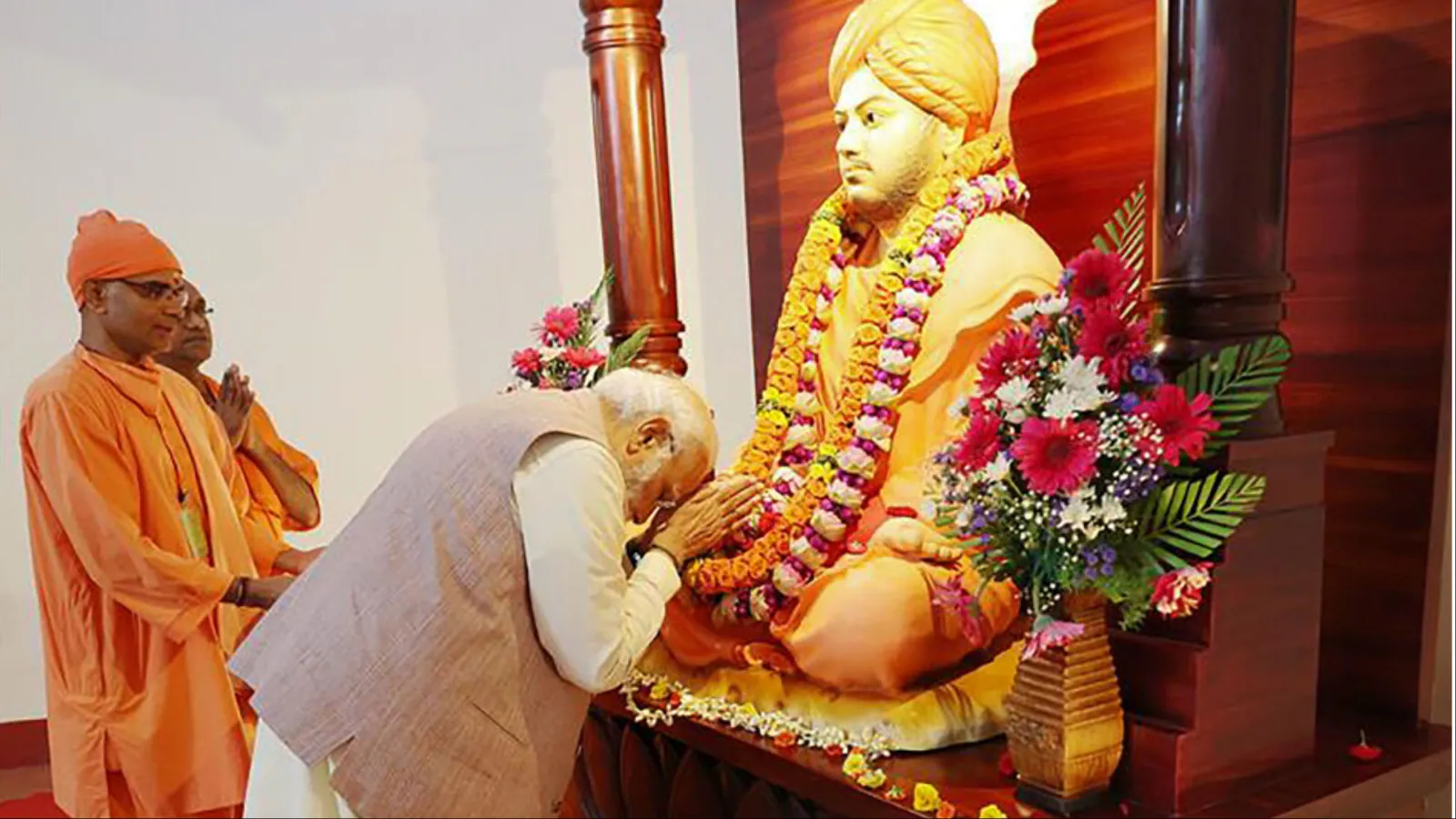
As the founding curator of the Rock and Roll Hall of Fame, Craig Inciardi had a front row seat to decades of music history that was largely shielded from the public. Not only was he present for pivotal reunions by Led Zeppelin, Cream, Talking Heads, Simon & Garfunkel, and many other legendary acts, but he also traveled the globe to collect priceless artifacts from Ozzy Osbourne, the Clash, Yoko Ono, Pete Townshend, and too many others to name. He also had the chance to sit in on the yearly Nominating Committee meetings where the Hall of Fame ballot is created.
His new book The Rock & Roll Hall of Fame: The Outrageous, Definitive, Untold History, out September 30 via Diversion Books, is a full account of his time with the Hall of Fame. It’s packed with details about the Hall of Fame’s ultra-secretive nominating process that has never before been shared with the public.
Here’s an exclusive look at the chapter entitled Bruce Springsteen Sends in The Goons. It touches upon the discovery of Joe Strummer’s “London Calling” manuscript in a leaky barn, the tragic death of Hall of Fame co-founder Ahmet Ertegun, the Sex Pistols’ decision to bail on their induction, and how retired FBI agents became involved in the quest for Bruce Springsteen’s Born to Run notebook.
In 2005, one of my former clients from Sotheby’s, Ed Kosinski — a prominent lender to the museum — landed one of the most significant collections in the history of twentieth-century pop culture: Bruce Springsteen’s “Born to Run” spiral notebook, which contained more than 30 drafts of that single song. (Kosinski had purchased it from the writer Charlie Cross, who had acquired it from Bruce’s old manager Mike Appel.)
I immediately thought the notebook would be great for the Hall of Fame, and presented the idea to Jann Wenner, who discussed it with his friend and fellow board member (and Bruce’s longtime manager) Jon Landau. Ed’s price: 1 million dollars. Jann proposed that the foundation would put up $500,000, and the museum, in turn, would put up the balance.
Editor’s picks
I showed the notebook to the museum’s director Terry Stewart. It contained nearly 100 pages and included evolving drafts of not only “Born to Run” but also “Thunder Road” and “Jungleland” — and in each case, the early versions of the songs had almost no resemblance to the final product. It showed an extraordinary creative evolution and was a hands-on guide to the way that Bruce’s exquisite songwriting craft unfolded. Years later, Springsteen jokingly described himself as a “sociopath” when he was writing the Born to Run album: His revisions took months. It was a process so different from, say, Neil Young, whose songs seemed to shoot out of him like a firehose. Neil could write two or three songs in an after-noon fever dream.
Unfortunately, that deal fell apart, and a few months later, things got weird when Springsteen’s attorneys became involved.
“Two retired FBI agents showed up unannounced at my apartment,” Kosinski told me; they pushed past the doorman at his Manhattan apartment building and knocked on his door, armed, asking about the notebook and how he’d come to acquire it — all on Yom Kippur. Bruce’s “man of the people” persona, it would seem, had its limits. In the end, everything worked out. Kosinski and Bruce Springsteen made a deal.
Similar manuscripts were now coming into their own as investments. In today’s dollars, the “Born to Run” notebook is probably worth $4–$5 million — and that single page of Jimi Hendrix’s crumpled-up lyrics for “Purple Haze” that Seymour Stein bought from my auction at Sotheby’s way back when? It’s now worth a cool $1 million.
When Springsteen’s manager Jon Landau became the sole chair of the nominating committee that year, he began to bring in new blood, diversifying interest and attention away from an earlier focus on the blues and R&B and toward somewhat more modern music. Miles Davis’ name came up, with the big-time music attorney Peter Shukat, who had represented the estates of Davis, John Lennon, and others, making noise and calling members of the committee in the time leading up to the next meeting on September 19. For him, it was a simple business decision: He wanted to promote the Davis catalog.
Related Content
Landau made his thoughts clear at the nominating meeting that Miles Davis should not be inducted, but he was overruled: His personal vision of what the Hall of Fame should be was being challenged.
…
That spring, I was back in England, resuming work on Joe Strummer’s collection. I had already made two visits to his old farmhouse in Somerset, and each time I showed up, his widow, Luce, seemed to have found more material for me to sift through. She knew me well by this point and allowed me to wander around the outbuildings to look for additional artifacts.
Soon after my arrival, Luce pulled out Joe’s two most important guitars: his iconic blackish-gray Telecaster, which was covered in stickers (while many guitars now are decorated in a similar way, this was among the first of its kind, with dozens of setlists pasted or taped to the top the guitar), and its companion, a natural-colored Tele that served as a backup.
We rummaged through some more trunks in the house, and from there, Joe’s former assistant — his nickname was Pockets — and I walked over to a large eighteenth-century brick barn. The structure had a leaking roof and no electricity, and it was dark and dank inside — certainly not the kind of place where you’d expect to find any treasure.
I was scavenging around on my hands and knees, but it all began to seem like a waste of time. Eventually, though, I came upon an old beaten-up trunk filled with papers that were mostly damp or soaking wet. There was also evidence that rats had been in the trunk — not just droppings, but chunks of paper had bite marks on the corners, and chew-sized pieces of other pages were missing.
As I sifted through the debris, I located a section of papers in the middle of a stack that was dry — and soon realized that many of these papers were Joe’s handwritten lyrics from the Clash’s London Calling album and were in pretty good shape. It was an astonishing discovery: I first found a lyric fragment to “Lost in the Supermarket” — one of Strummer’s most brilliant songs, a lament about a world that is becoming increasingly commercialized, which was sung by Mick Jones — scribbled on an Ernie Ball guitar string envelope. Next, I found the lyrics to “Clampdown” and “Death or Glory.” I felt like Indiana Jones excavating the past. These were some of the most important relics from the twentieth century, and I had rescued them from destruction and oblivion. After that, I found a version of the “London Calling” lyrics that had sustained some water damage but was still readable. The lyrics of other songs, of course, were mere meals for some starving rodent.
Riding on the train back to London, I knew I had the makings of a blockbuster exhibit.
A couple months later, I was back in London continuing the hunt. Next stop was a trip to see Mick Jones at his recording studio inside a warehouse in Acton. Jones had an amazing archive of posters, papers, and his stage clothing, along with newspaper clippings and magazines. The studio was jam-packed with many of his guitars, including his Les Paul Jr., and I recognized a bunch of them from his days with the Clash.
That night, we went to a club that was owned by John Mayall’s son Gaz. Jones was a huge Stones fan, and he told me that he had been lucky enough to go to their legendary concert in Hyde Park in 1969. He and his school friends had also learned where Mick Jagger lived, at Forty-Eight Cheyne Walk in Chelsea, and they’d walk there and simply hang out in front of the house, just staring into the windows.
“One day, Mick came over and pulled the curtain shut right in front of us,” Jones told me. He and his crew were thrilled.
Jones had a fantastic sense of humor, and he was extremely enthusiastic about our exhibit. I think the fact that he himself was a collector of pop culture made it that much more interesting for him. He told me he planned to attend the opening.
I was also thrilled to find myself back at Abbey Road again — this time for an EMI party in honor of Sir George Martin, the Beatles’ famous producer. I got to see Studio One, the big orchestra room where many of the most important and historic movie soundtracks from the modern era were recorded, including Raiders of the Lost Ark, The Last Emperor, and Braveheart, to name just a few. Then I popped upstairs to see Studio Three, where Pink Floyd recorded their first album while the Beatles were downstairs in Studio Two. The most unexpected surprise, though, was seeing the microphone room. Lester Smith, who had been working at Abbey Road since 1970, was the keeper of Abbey Road’s microphone collection, which then totaled eight hundred–plus — all of them kept in good repair and still used to this day. He showed me one of his handwritten logs that detailed which microphones were used on recording sessions, and I saw many of the microphones used to record the Beatles, including what Lester said was the most requested microphone at Abbey Road: the Neumann U 47 that Paul McCartney used to record the vocals for “Penny Lane.”
. . .
That summer, Suzan Evans stepped down from her position as executive director of the Hall of Fame for personal reasons, though she remained on the board. Evans was succeeded by Joel Peresman, who had cut his teeth in the mailroom at William Morris and later booked acts like David Bowie, Genesis, and Pink Floyd. In the mid-’90s, Peresman worked at Madison Square Garden and helped produce the concert for New York City after 9/11. He knew the concert side of the business well, and he’s the best salesman ever for the Hall of Fame’s brand.
I’ve already explained that the work of a curator can be painstaking, requiring scholarship, dedication and perseverance. It can take years or even decades to reel in an important collection; but sometimes things just fall into your lap. That has happened to me many times under different circumstances. Sometimes, it comes down to misfortune or somebody losing their job.
Right after Joel started, I received a call one morning from a friend of the acclaimed music journalist Robert Christgau who said that I should immediately get over to his office at the Village Voice to grab the remnants of his reference library. I had heard the day before that Christgau had been fired from the Voice, so I jumped in a taxi and rushed downtown to the paper’s famed headquarters. When I arrived, it looked like the last days of Pompeii — the offices were a mess; staffers were crying as they packed up their desks, and many of them angry. Christgau seemed disgusted. He pointed to a huge pile of books and told me I could take what I wanted. (I had a sense the books were all duplicates of copies he had at home.) I was there to scoop up some crumbs. I grabbed them and left; five or so boxes of reference books. But it just didn’t feel satisfying.
Other times, I would swoop in at the last moment to haul away truckloads of material that would otherwise go to another institution or into a dumpster. One such instance happened when the Philadelphia Inquirer decided to get rid of a massive chunk of their reference library and record collection. I showed up with moving vans and whisked away an immensely important collection that was easily worth well over $100,000. If I had hesitated even for a day, a librarian or archivist from one of Philly’s many universities would have surely taken the haul. That was an immensely satisfying get.
There was more change afoot. In October 2006, Ahmet Ertegun was attending a Rolling Stones concert at the Beacon Theatre, a fundraiser hosted by Bill and Hillary Clinton, and was backstage saying his hellos — Keith Richard’s manager Jane Rose, who was friends with Ahmet, had just taken some photos of Ahmet with the band — when he fell and hit his head on a concrete floor. Ertegun was taken to the hospital, having fallen into a coma, and passed away on December 14. His passing was a tragedy, but we took solace in knowing he was active until the end, never letting up on his hectic schedule.
“I think it’s better to burn out than fade away,” Ahmet had said. “It’s better to live out your days being very, very active — even if it destroys you — than to quietly disappear.”
It was somehow fitting that he was with the Stones when he checked out.
I attended Ahmet’s memorial celebration at Rose Theater in Lincoln Center. Many Atlantic artists, of course, were on hand, and the diversity of the crowd of 1,200 reflected well on his epic life: There were old bluesmen, British rockers, politicians, and women in high society. Soon, a corps of drummers and horn players piped up, and Wynton Marsalis, the artistic director of Jazz at Lincoln Center, emerged from a side door playing “Oh, Didn’t He Ramble,” a tune typically performed at funerals in New Orleans.
Eric Clapton was also among those who performed and spoke that evening. “I loved Ahmet,” he said. “He was like a father figure to me. In the old days, we’d have a drink and do some other things, and any time that happened, he would start singing songs to me . . . We’re going to do two of the songs he always sang: ‘Please Send Me Someone to Love,’ and the other by Stick McGhee, called ‘Drinkin’ Wine Spo-Dee-O-Dee.’ ”
There were also tributes from Doctor John, New York City mayor Michael Bloomberg, Henry Kissinger, Bette Midler, Ben E. King, Kid Rock, and Jerry Wexler, and more performances, from Phil Collins; Crosby, Stills & Nash; and a stunning version of “Mr. Soul” by Neil Young and Stephen Stills on acoustic guitars. Toward the end of the evening, Mick Jagger delivered the most engaging speech of the night; he was in a good mood. “Oh, he was a father figure, it’s true,” Jagger said, “but to me, he was more like the wicked uncle with the wicked chuckle.” He marveled that Ahmet was the kind of unique animal who could discuss politics and Islamic history in one breath, and then select the next Vanilla Fudge single with the following breath. Ahmet had hired strippers for one of the Stones’ after-parties, and Mick described them as “rotund women of a certain age who stripped for free on the weekends.”
“I could never keep up with him,” Jagger said.
I was in awe of Ahmet. Most of us were.
Jann said, “He was our arbiter, and ‘What does Ahmet think?’ was our constant refrain in moments of doubt and decision.”
. . .
Later that year, Ed Kosinski connected me with the Wall Street titan Martin Zweig — I was familiar with his name as somebody who collected high-end sports memorabilia. Zweig was from Cleveland and had become interested in the stock market when he was in high school. In addition to being an investor, he appeared on television as a pundit and had predicted the 1987 stock market crash. Up to this point, people in finance had not donated anything significant to the museum, but Zweig told me that he wanted to make a substantial gift to the Hall of Fame and asked me to meet him at his apartment.
“I live in the Pierre Hotel,” he’d said, “so just ask for me when you get to the concierge desk.”
I arrived at the appointed time and place, and a few minutes later, Zweig appeared and said, “Let’s go upstairs.”
“I’ll give you a tour,” he said in the elevator, with a smirk.
We rode to the forty-second-floor penthouse of the building and entered an enormous commercial kitchen, where Zweig introduced me to his chef and her staff. Zweig and his family occupied the top three floors of the Pierre — which included the hotel’s grand ballroom with 360-degree views of the city, along with Long Island and New Jersey — which he purchased a few years earlier for $21.5 million — “the most important sale in the twentieth century,” as Elizabeth Lee Sample, one of the real estate agents involved, put it to the New York Times. “It is a chateau in the sky.” (When the hotel first opened in 1930, Zweig’s apartment was known as Club Pierrot, a supper club for high society with members including William Vanderbilt and Walter Chrysler — and an extraordinary display of wealth during the Depression.)
I could also tell that nobody was living there at the time. The only thing left in the space was his memorabilia collection, which included several of Muhammad Ali’s Golden Gloves and heavyweight champion belts, one of John Lennon’s pianos from the late 1970s, one of Babe Ruth’s Yankee uniforms, and arguably the most famous dress of the twentieth century: the beaded gown that Marilyn Monroe wore to sing happy birthday to President Kennedy at Madison Square Garden, now the centerpiece of the 400-capacity ballroom, with a custom mannequin to Monroe’s exact proportions. (It was strange to read, years later, that Kim Kardashian wore the dress to the Met Gala, and that beads from the gown fell off while she walked around — but it certainly wasn’t the first time somebody had worn a historic garment years after it had been made famous: In the 1970s, George Harrison modeled many of his most famous Beatle outfits, including his Sgt. Pepper’s uniform, in a video shoot.)
I was in Zweig’s penthouse for less than an hour, and somehow, I knew I would never be back. The entire experience was a spectacular reminder of all the amazing — and often secret — spaces that people occupy in New York City, whether for a lifetime or a mere moment or two. Zweig ended up donating a vast collection to us, including that John Lennon piano, Jimi Hendrix’s Marshall amplifier and one of his effects pedals, and some wardrobe from Madonna, and the top hat worn by Elton John on the cover of his album A Single Man, among others.
This year’s induction ceremony would be the fifteenth one that I attended. Each one seemed to come around really quickly, and each one unfolded differently. I never had a set place that I’d be sitting for the evening; sometimes I was on the floor, sometimes I was at the writers’ table, which was reserved for everyone who had contributed to the program. This year I was seated upstairs, in the second balcony, at a random table. I mingled and made small talk with the group.
This year, Black Sabbath, Blondie, Miles Davis, Lynyrd Skynyrd, and the Sex Pistols were among those inducted. When the votes came in and it was announced that the Pistols would be inducted, punk rock fans around the world were thrilled. I had seen them on one of their reunion tours at Roseland — an astonishing show; pure, jaw-dropping joy for everyone lucky enough to get a ticket. Their induction, I thought, would be an ecstatic moment. But a few weeks before the ceremony, Johnny Rotten faxed a handwritten note to Jann Wenner. I recognized his distinctive handwriting:
“Next to the Sex Pistols,” the note began, “rock ’n’ roll and that Hall of fame is a piss stain. Your museum. Urine in wine. We’re not coming. We’re not your monkeys. If you voted for us, hope you noted your reasons. Your [sic] anonymous as judges but your [sic] still music industry people. We’re not coming. You’re not paying attention. Outside the shit-stream is a real Sex Pistol.”
And while there was always a certain amount of drama at the ceremony, this year was particularly extreme. Black Sabbath refused to perform — they weren’t speaking to each other at the time — but Metallica stepped in for a tremendous tribute. The volume coming from the stage had never been so loud; production staff handed out earplugs to people in the first few rows. When Miles Davis was being inducted, his extended family of nieces and nephews — they controlled his publishing and managed the estate — were on hand to receive the award, but Davis’s son Miles Davis IV, who was estranged from the rest of the family, snuck onto the stage, grabbed the award, and left the ballroom. And when the members of Blondie were accepting their awards, guitarist Frank Infante pleaded with Debbie Harry in front of the entire audience, asking if he could play with the band that night. She refused.
When the evening’s MC announced that there would be a short break while they reset the stage for the next honoree, Lynyrd Skynyrd, two of the women seated at my table stood up and made their exit.
“We’ll be back in a little while,” one of them said. “We’re playing with the band.”
After the members of Skynyrd received their awards, the band played a short set of hits, and it dawned on me: The women from my table were Leslie Hawkins and JoJo Billingsley of the Honkettes, the band’s backup singers. When they came back to the table, I congratulated them, and we spoke about their performance and their time in the band. Leslie had survived the 1977 plane crash that had killed Skynyrd founder Ronnie Van Zant — at the Waldorf, she pulled down the side of her dress, revealing burn scars from the accident. (The third member of the Honkettes, Cassie Gaines, died in the crash, along with her younger brother Steve Gaines, Skynyrd’s guitarist and vocalist, and several others).
Earlier in the evening, Jann had read the Sex Pistols’ profane note from the podium and then said: “So for Johnny Rotten and the rest of them, these [awards] will be in Cleveland at the Hall of Fame. Should they come and want them, they can have them — or come and smash them to bits; they can do that, too. Welcome to the Hall of Fame, Sex Pistols.” It was a hilarious moment. While I was disappointed at the time that the band didn’t show up, in retrospect, Johnny Rotten demonstrated that he was still a true punk rocker.
(Other members of the group had apparently wanted to attend the ceremony, but when Rotten said no, everyone else fell in line.)
Trending Stories
The following week I saw Jann at the office, and we briefly compared notes about the ceremony. Jann instructed me that the Sex Pistols’ awards should not be shipped to them under any circumstances: The only way a band member could get their award was if they personally made the trip to Cleveland — no exceptions.
Excerpted from The Rock & Roll Hall of Fame: The Outrageous, Definitive, Untold History by Craig Inciardi, available now wherever books are sold. Copyright © 2025 Craig Inciardi. Printed with permission of the publisher, Diversion Books. All rights reserved.



